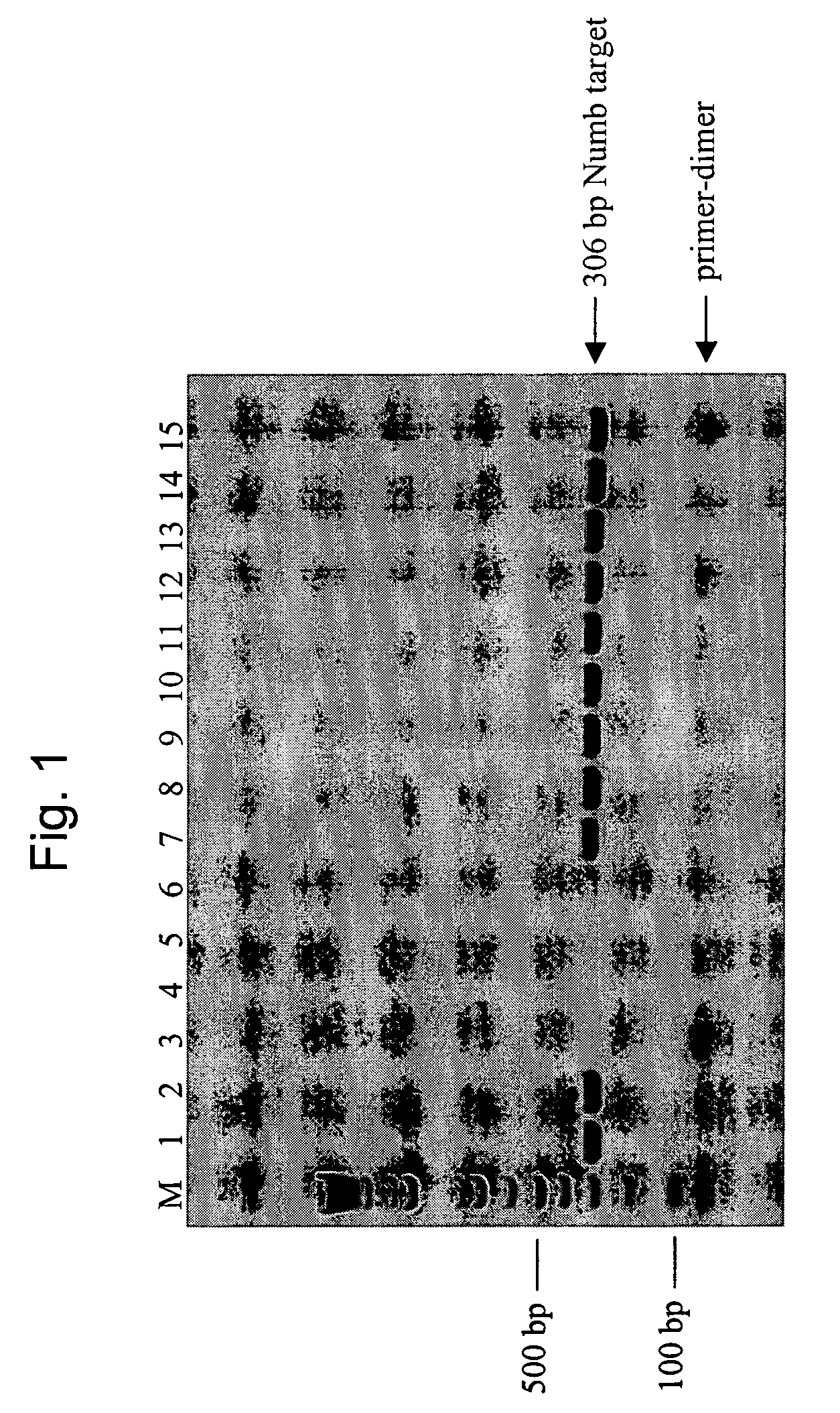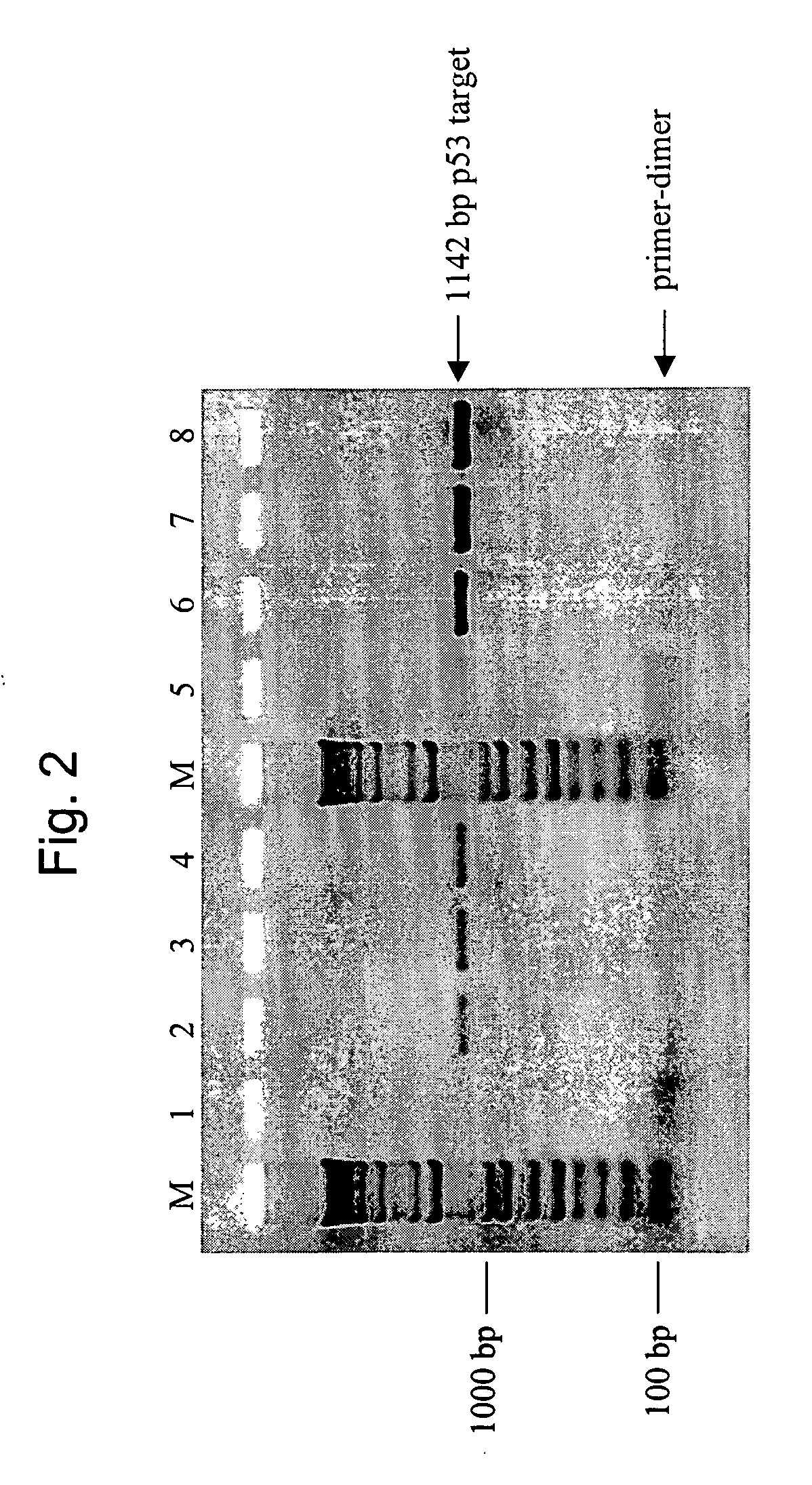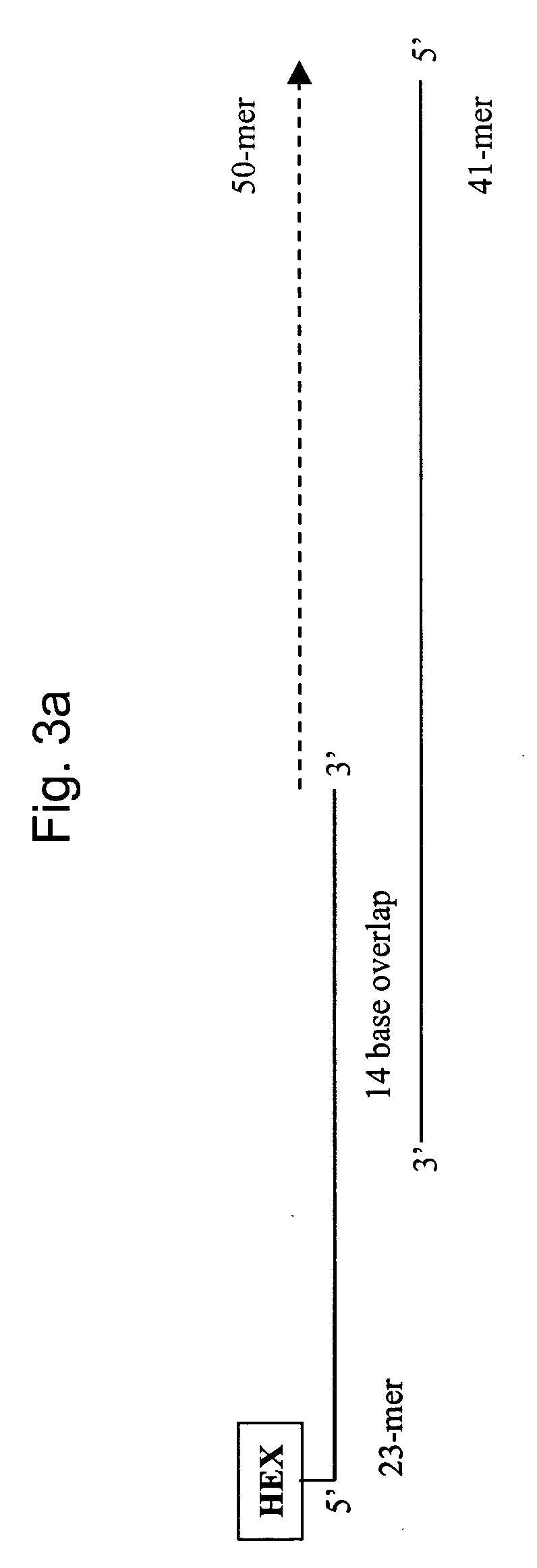Novel hot start nucleic acid amplification
a nucleic acid and hot-start technology, applied in the field of new-start nucleic acid amplification, can solve the problems of inability to perform empirical determination, inconvenient assembly of reaction mixtures at higher temperatures, and inability to achieve amplification from non-specific priming
- Summary
- Abstract
- Description
- Claims
- Application Information
AI Technical Summary
Benefits of technology
Problems solved by technology
Method used
Image
Examples
example 1
[0076] A 306 base pair (bp) region of the gene product Numb (sequence provided at SEQ ID NO. 8) was amplified, separately, under a variety of different conditions of SSB species and concentration, selection of polymerase, etc., as further described below, from 5 nanograms (ng) of human genomic DNA. The target is identified as NT—026437.11 at NCBI (sequence location: 54742877 to 54743182). The following amplification primers were used, each of which was 25 bases in length;
Numb Forward:5′-GAGGTTCCTACAGGCACCTGCCCAG-3′(SEQ ID NO.9)andNumb Reverse:5′-CAAAATCACCCCTCACAGTACTCTG-3′.(SEQ ID NO. 10)
[0077] Primers were from standard commercial suppliers and resuspended in TE (10 mM Tris-HCl (pH 8), 1 mM EDTA) at desired concentrations. Human genomic DNA was from Promega Corporation, Madison, Wis. These primers were chosen because they have several bases of complementary sequence at the 3′-end between the forward and reverse primers and generate nonspecific amplification products.
[0078] A to...
example 2
[0102] This example illustrates the effectiveness of a mixture of wild-type and mutant T7 SSB in the hot-start method. Specifically, this example uses a 1:1 mass ratio of wild-type T7 SSB to Δ26C protein in a polymerase chain reaction to reduce the generation of nonspecific primer extension products. In this experiment, 1 microgram (μg) of the mixture contained 0.5 μg of each protein. An 1142 base pair (bp) region of the gene product p53 (SEQ ID NO. 11) was amplified from either 1 nanogram (ng) or 100 picograms (pg) of human genomic DNA. This target is identified as NT—010718.15 at NCBI (sequence location: 7174821 to 7175962). The following amplification primers were used;
p53 Forward:5′-TGCTTTATCTGTTCACTTGTGCCC-3′(SEQ ID NO. 12)24 bases in length,andp53 Reverse:5′-TGTGCAGGGTGGCAAGTGGC-3′(SEQ ID NO. 13)20 bases in length.
[0103] Primers were from standard commercial suppliers and resuspended in TE (10 mM Tris-HCl (pH 8), 1 mM EDTA) at desired concentrations. Human genomic DNA was fr...
example 3
[0120] This example further illustrates the effectiveness of mixtures of wild-type and mutant T7 SSB in blocking primer extension at room temperature. Specifically, this example uses a 1:1 mass ratio of wild-type T7 SSB to Δ26C protein in a ‘mock’ polymerase chain reaction in which primer extension was directed at two primers that were purposefully designed to form hybrids. Thus, there was no exogenous dsDNA template in the reaction, only the primers themselves serve as template for synthesis. This assay was designed to access the ability of SSB to block DNA synthesis from an extendable hybrid at two temperatures. The first temperature was room temperature (25° C.), as this simulated the temperature at which reactions are generally assembled. The second was at 72° C., which is a more optimal temperature for DNA synthesis by Taq DNA Polymerase.
[0121] The two primers chosen for this experiment were designed to form a dsDNA hybrid with 14 bp of overlap at their 3′-ends. The forward pr...
PUM
| Property | Measurement | Unit |
|---|---|---|
| temperatures | aaaaa | aaaaa |
| temperatures | aaaaa | aaaaa |
| temperature | aaaaa | aaaaa |
Abstract
Description
Claims
Application Information
 Login to View More
Login to View More - R&D
- Intellectual Property
- Life Sciences
- Materials
- Tech Scout
- Unparalleled Data Quality
- Higher Quality Content
- 60% Fewer Hallucinations
Browse by: Latest US Patents, China's latest patents, Technical Efficacy Thesaurus, Application Domain, Technology Topic, Popular Technical Reports.
© 2025 PatSnap. All rights reserved.Legal|Privacy policy|Modern Slavery Act Transparency Statement|Sitemap|About US| Contact US: help@patsnap.com



